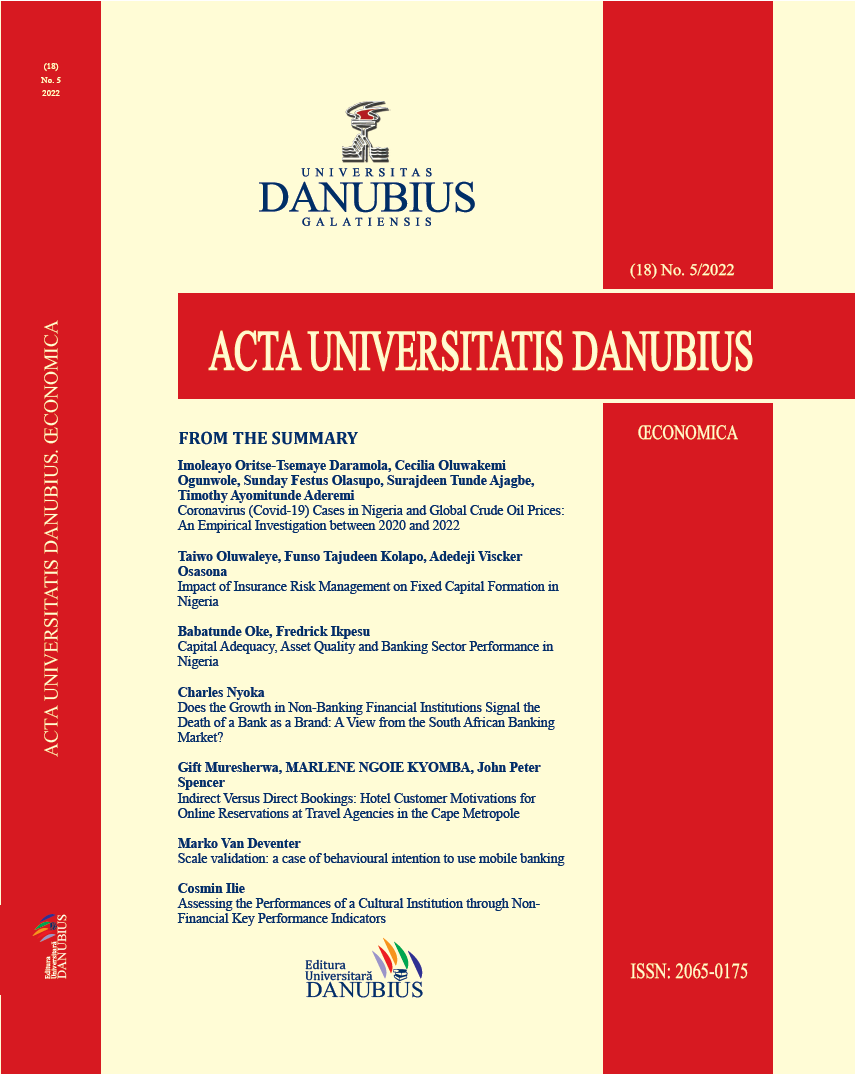Does the Growth in Non-Banking Financial Institutions Signal the Death of a Bank as a Brand: A View from the South African Banking Market?
Keywords:
Brand, patronage, charges, non-Banking institutions, South AfricaAbstract
The banking sector has undergone considerable changes since the Global Financial Crisis (GFC) as the countries no longer operate in isolation, owing to globalization (Viegi, 2008).
Yesteryear, banks were easily recognizable as a brand. Today brand bank is wanning, and profit margins are being squeezed.
In the contest of South African Banking market this paper investigates whether the emergency of Non-Banking Financial Institutions is threatening the brand of a bank. Using a guided questioner, this paper asserts that the emergency of Non-banking institutions has eroded the banks’ brand and has impacted on patronage and loyalties to traditional models of banking. Based on Cronbach’s alpha criterion, results from the study reveal that the survey instrument used to collect data from participants was statistically reliable. Overall, results on frequency statistics and factor loadings computed based on the exploratory factor analysis technique reveal that respondents largely concurred with the assertion that brand bank is on its way to the grave due to the emergence and growth in non-banking financial institutions in South African banking market. The results will benefit banks ‘s efforts in re-aligning their products with market trends and assist policy makers and regulatory authorities in tracking banking practices in their economies
References
Barlevy. Gadi, 2003 “Credit market frictions and the allocation of resources over the business cycle”.
Journal of monetary economics 50 (8), 1795-1818, 2003. 104, 2003.
Beavers, A.S., Lounsbury, J.W., Richards, J.K., Huck, S.W., Skolits, G.J., and Esquivel, S.L. (2013).
“Practical considerations for using exploratory factor analysis in educational research,” practical assessment, research & evaluation, 18(6):1-13.
Blalock, G, Gertler, Levine D.I “Financial constraints on investment in an emerging market crisis “
Journal of Monetary economics. 55 (2008), pp. 568-591
Bresnahan, T.F, Raff D.M “Intra-industry heterogeneity and the great depression: the American motor vehicles”
Journal of Economic. History. 51 (1991), pp. 317-331
Caballero, R.J, Hammour, M.L “The cleansing effect of recessions” American Economics Review., 84 (1994), pp. 1350-1368
Cronbach, L.J. (1951). “Coefficient alpha and the internal structure of tests,” Psychometrika, 16, 297-334.
Djoumessi, E.C.K “Financial development and economic growth: a comparative study between Cameroon and South Africa:
Master of Commerce in the subject of Economics at the University of South Africa 2009.
English oxford living dictionaries 2016
Financial Essay, March 2015
Gurley, J.G., &Shaw, E.S. (1960). “Financial intermediaries and the saving-investment Process”.
The journal of finance, 11(2), 257-276
Jayaraman, S. & Kothari,S.P. (2013). “The effect of industrial sector transparency on bank risk-taking
and banking system fragility”. Working paper.
Hallward-Driemeier, M and Rijkers B. "Do crises catalyse creative destruction”?
Firm-level evidence firm-level evidence from Indonesia. Review of Economic Statistics. 95 (2013), pp. 1788-1810
Laima Spokeviciute; Kevin Keasey & Francesco Vallascas: 2018“Do financial crises cleanse the banking industry?
Evidence from US Commercial bank exits” Journal of Banking & Finance; Volume 99, February 2019, pages 222-236
Levine, R. (2002). “Bank-based or market-based financial systems: which is better”?
The Journal of Financial intermediation, 11(2), 398-428.
Mpako, V.M.W. (2007). Money market mutual funds and their impact on bank deposits
In South Africa, University of Pretoria.
Nishimura, K.G. Nakajima, T. & Kiyota K. “Does the natural selection mechanism still work in severe recessions?
Examination of the Japanese Economy in the 1990s” Journal of Economic Behaviour & organization 58 (1),
-78, 2005.
Ouyang, M “The scarring effect of recessions “Journal of Monetary economics. 56 (2009), pp. 184-199
Rajan, R.G., &Zingales, L. (1998). “Financial dependence and growth”, The American Economic Review, 88(3), 559–586.
Saunders, A., & Cornett, M.M. (2008); Financial institutions management:
A Risk Management Approach (6th edition). pp 9–10.
The financial brand: January 27, 2014
Viegi, N. (2008). "The impact of the global financial crisis on developing countries like South Africa." , (november). available from:http://www.ids.ac.uk/files/dmfile/southafricanicolaviegi.pdf. (Accessed: 07 October 2017.
Wheelock, D, C &Wilson, P.W “Why do banks disappear? The determinants of US bank failures and acquisitions”
Review of economic statistics. 82 (2000), pp. 127-138
Downloads
Published
How to Cite
Issue
Section
License
Copyright (c) 2022 Charles Nyoka

This work is licensed under a Creative Commons Attribution-NonCommercial 4.0 International License.
The author fully assumes the content originality and the holograph signature makes him responsible in case of trial.


